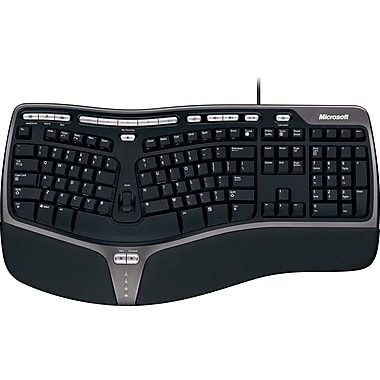As a result of an emphasis shift at work, I’ve been taking on a lot more evening and weekend work lately. This has lead me to the conclusion that my hardware setup is busted. I have these:

Both require a wireless dongle, which means they’re not well-behaved if Windows hasn’t installed them yet. Since they’re not on a unified receiver like Bluetooth, it also means when I switch computers I have to switch multiple dongles as well as my video cable.
The normal solution for this situation is to use a docking station. My work has lots of these around, so I figured I’d take one home and try it out:

I soon discovered, however, that the DisplayLink technology and Windows 10 (or at least, my copy of it) do not play nicely. In particular, it seems that my graphics cards kind of hate the idea of a usb-connected dock being responsible for routing video.
So now Windows 10 isn’t sending video after booting, which looks pretty much like a hard crash. To add fuel to the fire, Windows 10 does not by default have a way to boot into Safe Mode from the bootloader, which makes it hella difficult to follow the normal flow for fixings things like crash-on-boot graphics card conflicts. I assume Microsoft’s plan was to prevent certain lines of attack. This was a terrible way to do that, however.
On the bright side, you can at least create installation media for a Windows 10 box from a non-Windows-10-box, which is definitely necessary in a case like mine where you’ve taken the free OS upgrade without thinking about things like fixing boot-time crashes.
It doesn’t make it easy, however. Wireless keyboards and mice are notoriously unsupportable from boot loaders, even when it’s a UEFI device like mine. So every time you unplug anything or make any changes whatsoever, you’re taking a chance that you have no access to peripherals when coming back in. Which means things like pressing F8 are not a sure thing.
Happily, I was lucky enough to find out before that became an issue that my boot order wasn’t set up to accept usb keys before hard drive, which is the only reason I’m writing this on my computer now. And the installation media does know how to install a keyboard and mouse at least enough for the bootloader to pick up on the setting about half the time.
Speaking of the installation media, there’s a handy way to get into the F8 menu from there. Or so I believed.

It turns out that this isn’t actually available from the installation media in all cases. I’m really not clear on why this was available the first time around and only the first time around, but it made life more difficult while trying to do repairs.
Luckily, that command prompt has access to BCDEdit, which lets you turn on the F8 menu:
bcdedit /set {default} bootmenupolicy legacy
There are other ways to accomplish the same thing with this tool, but basically making this change (however you do it) means you can actually hit F8 to tell Windows to let you have access to this guy:

Once in Safe Mode, you can get to Device Manager, where you can uninstall graphics cards and DisplayLink devices. You can’t use Programs and Features for this because, I guess, that would be too easy.
Once I uninstalled those two meatheads, the computer actually booted, albeit at a fugly resolution setting. Reinstalling the graphics driver fixed that.
Protip: Don’t try to reinstall DisplayLink after you’ve fixed your computer once. It DOES NOT WORK.

